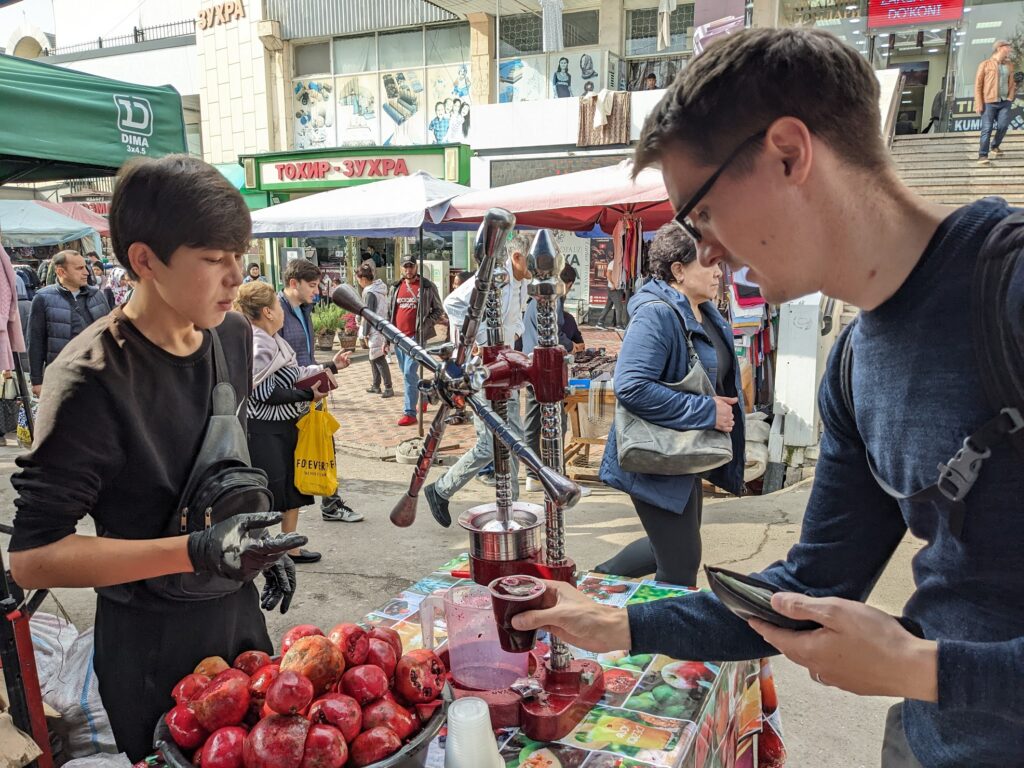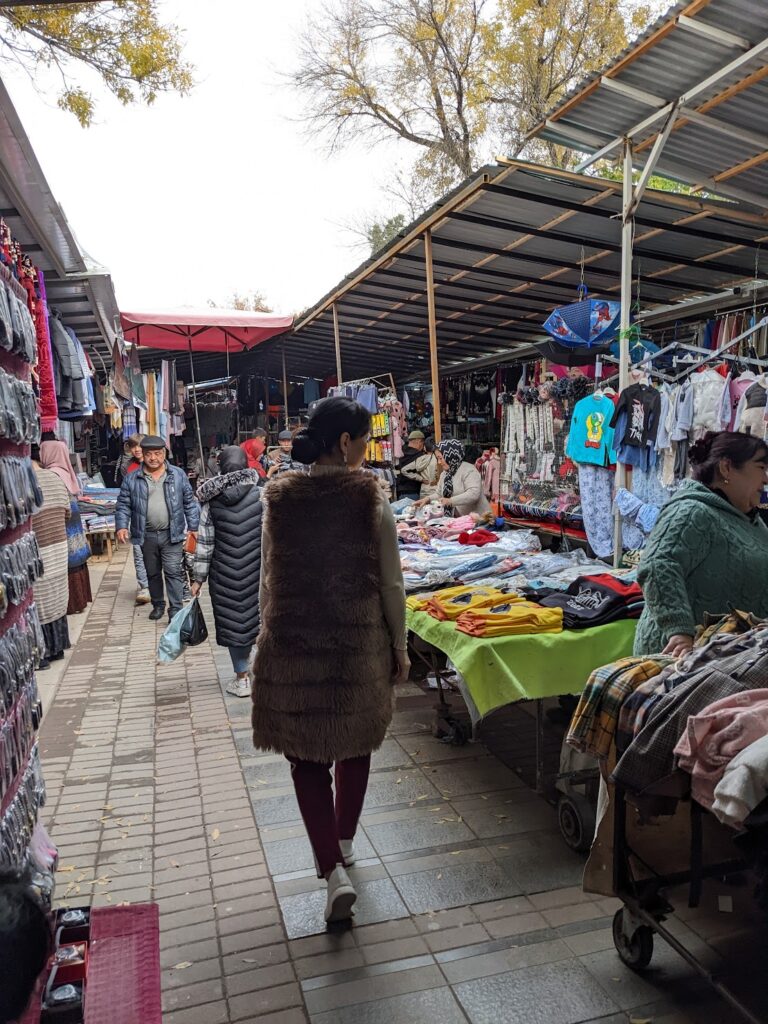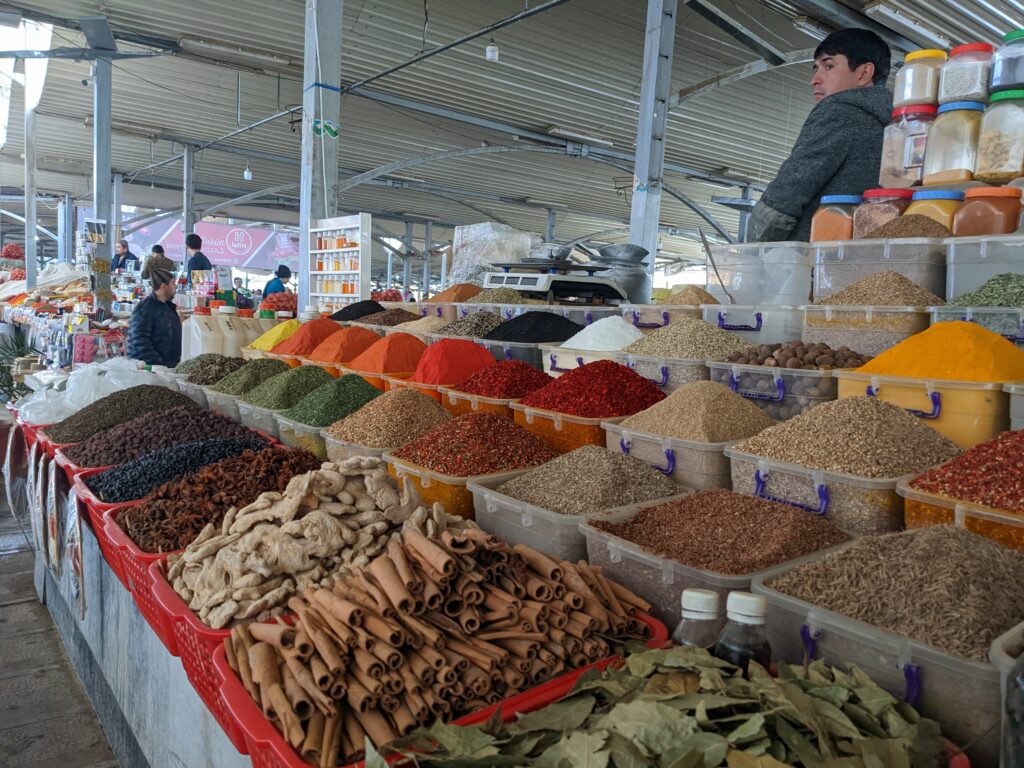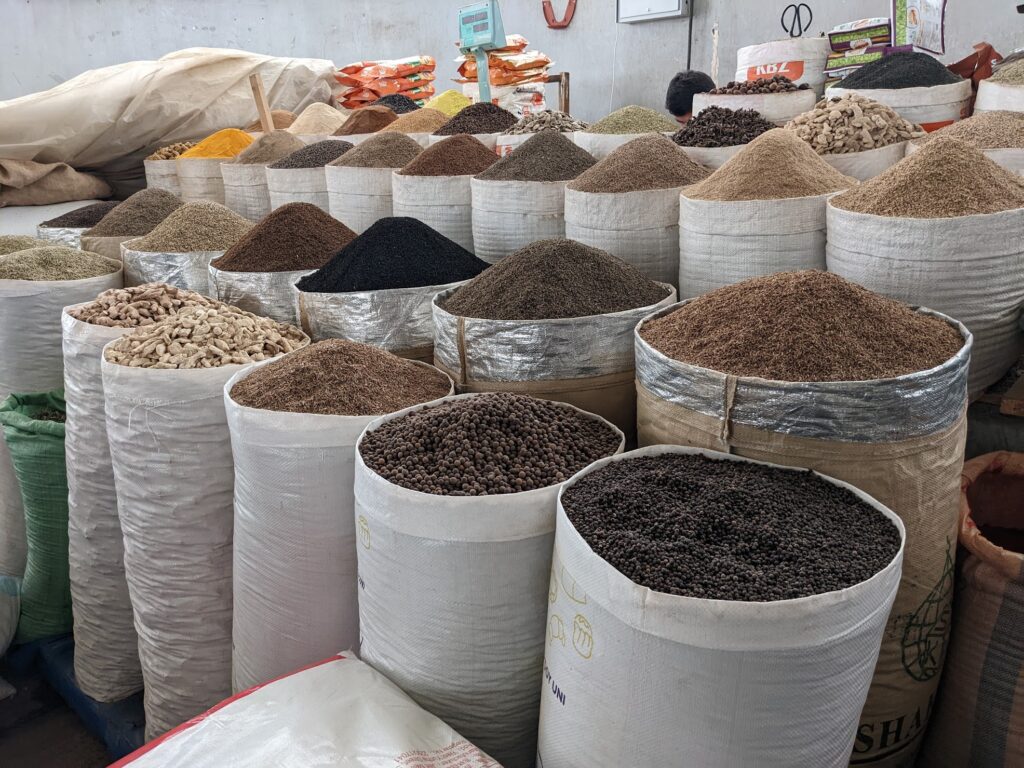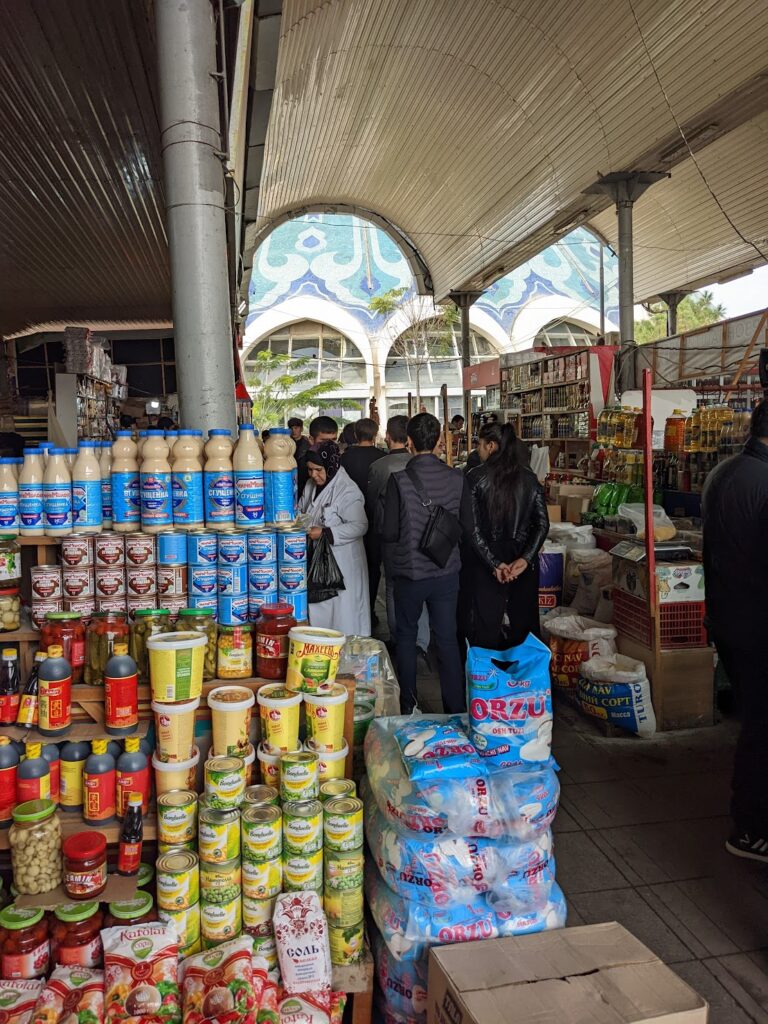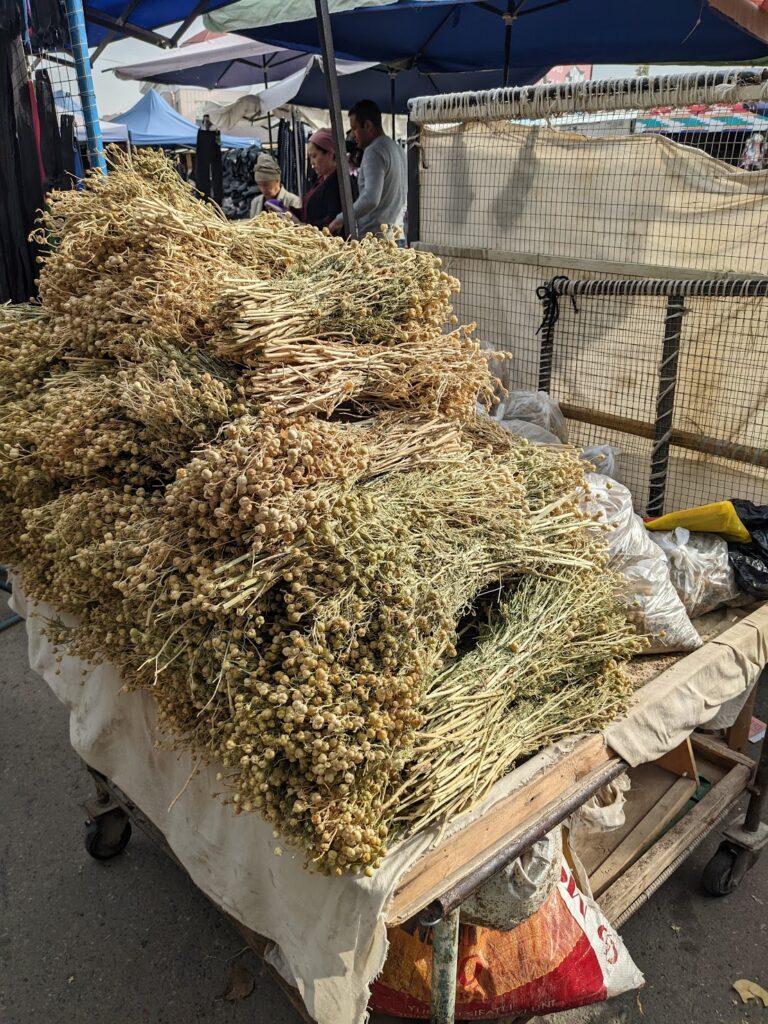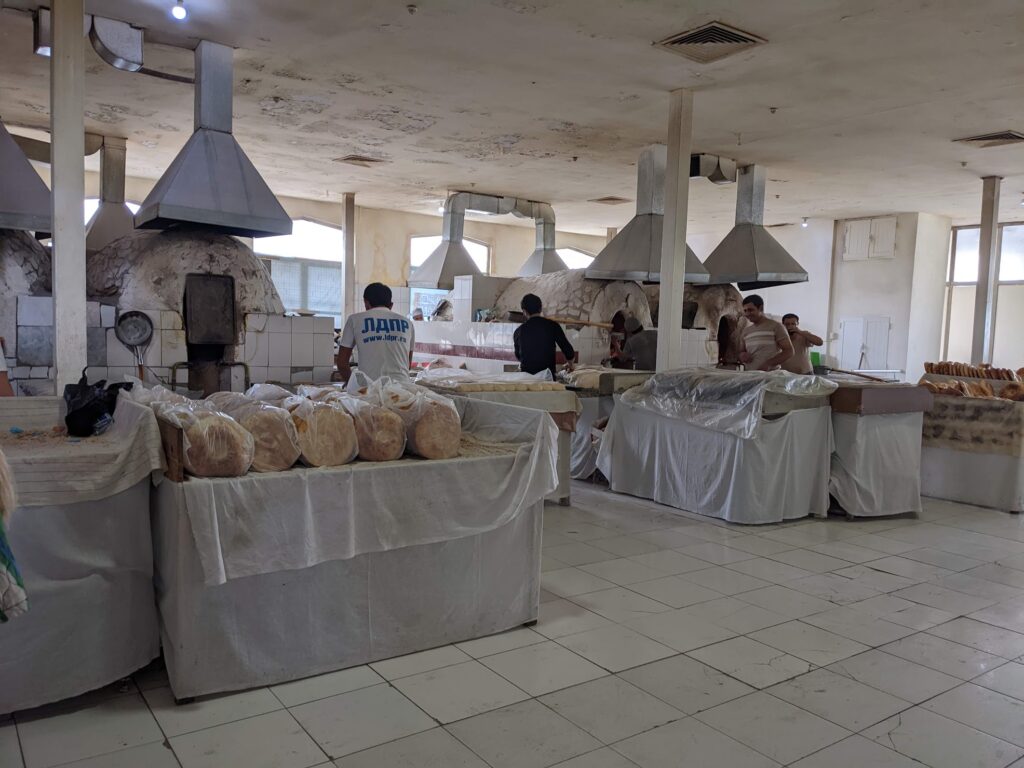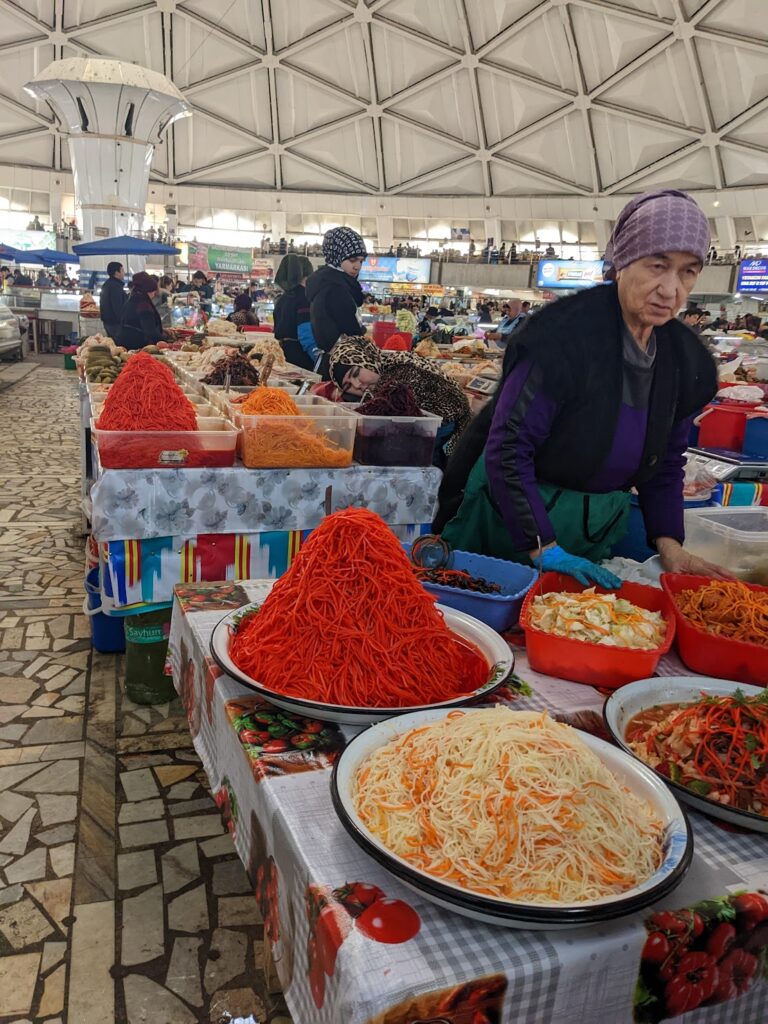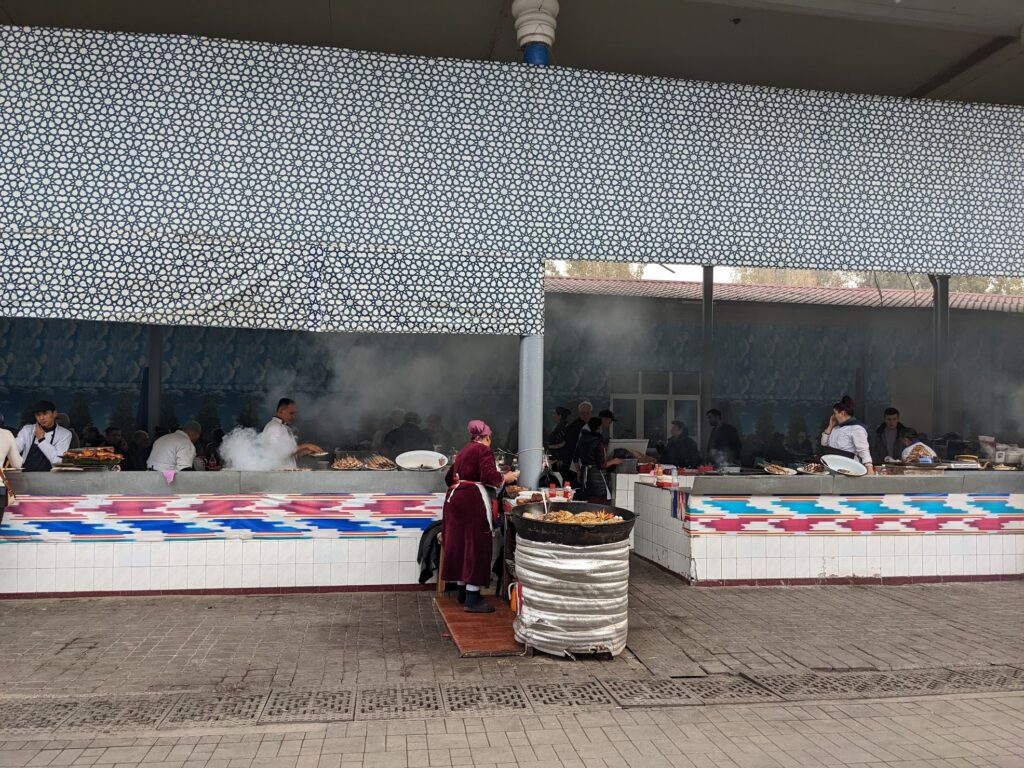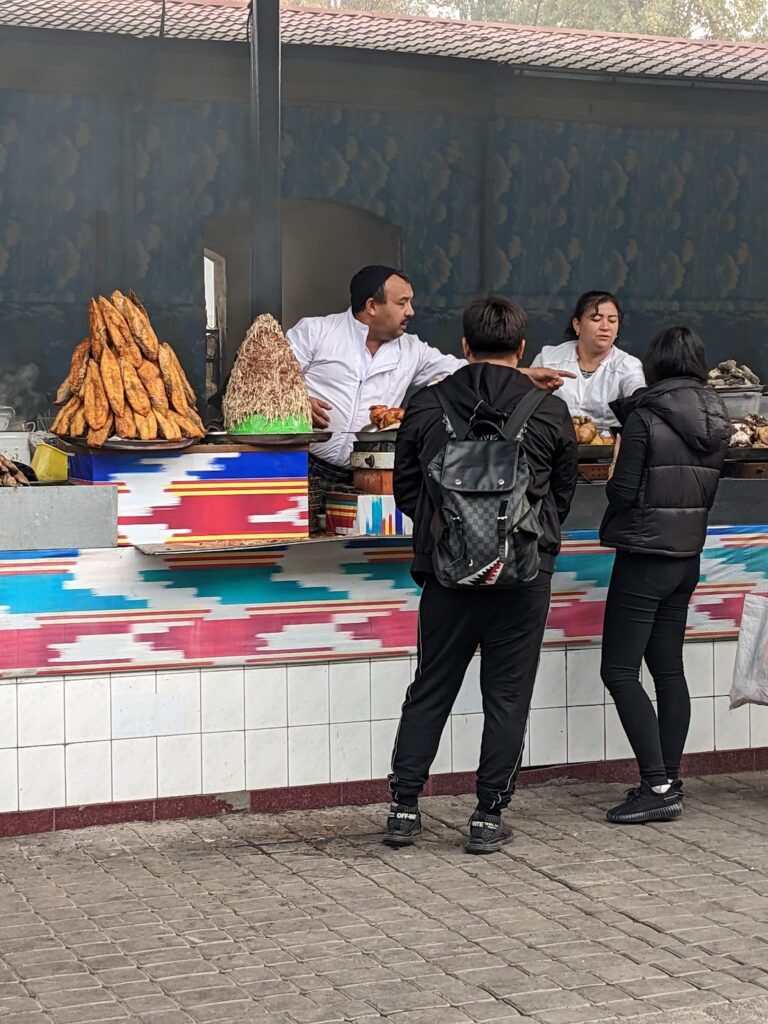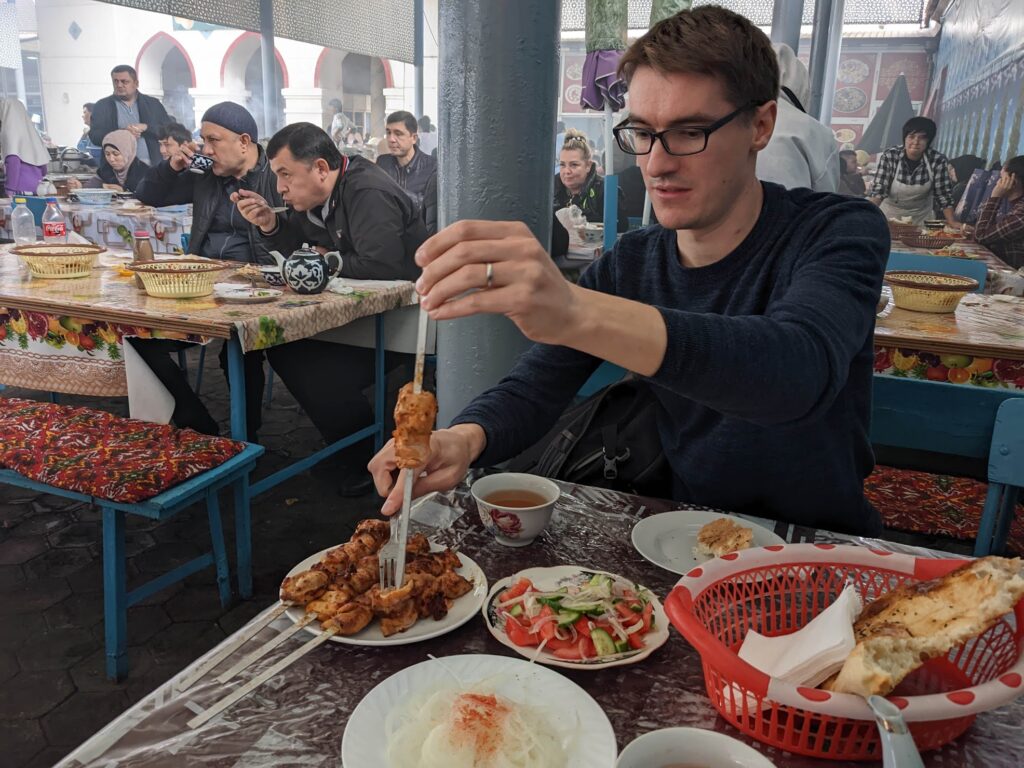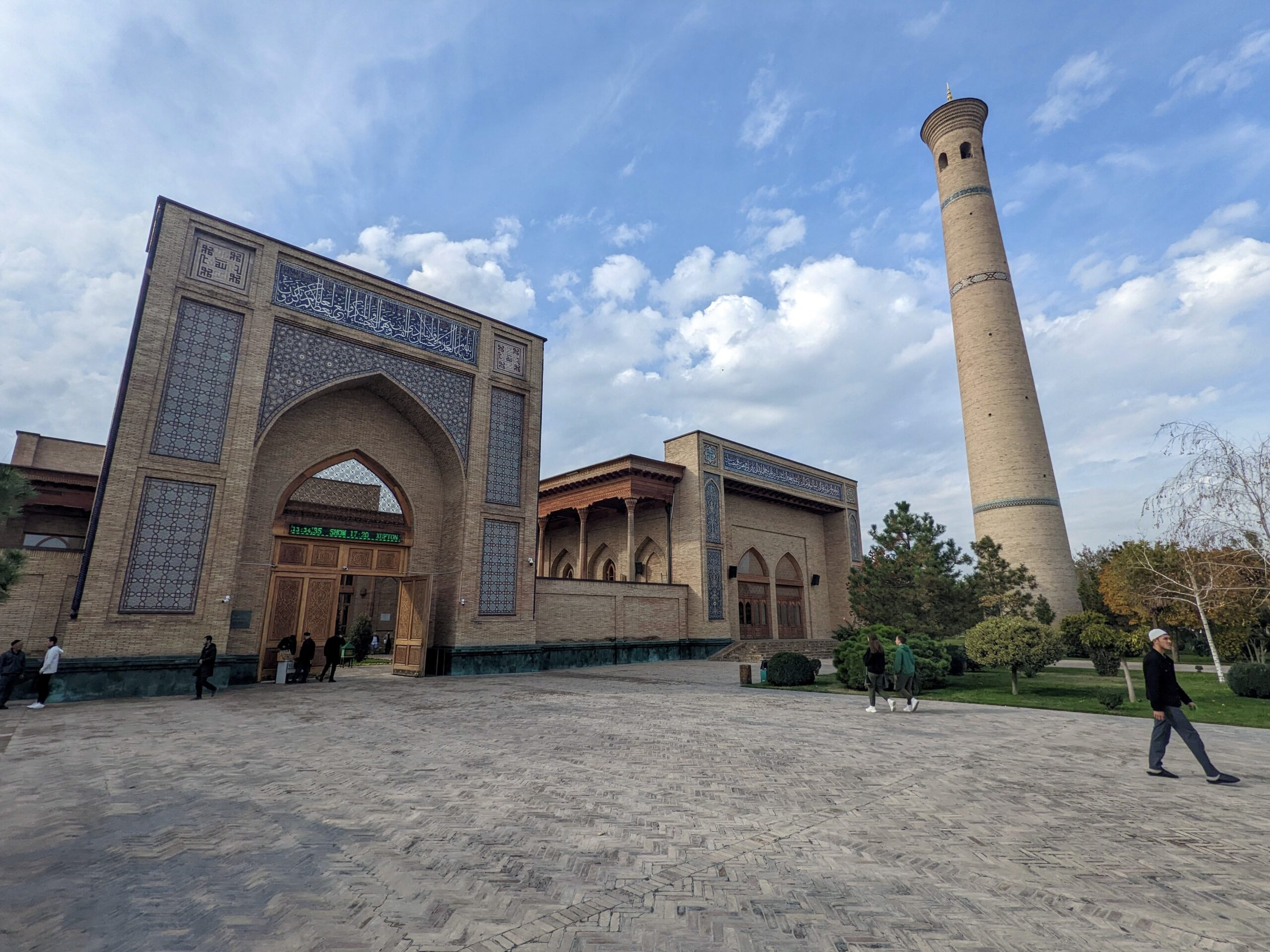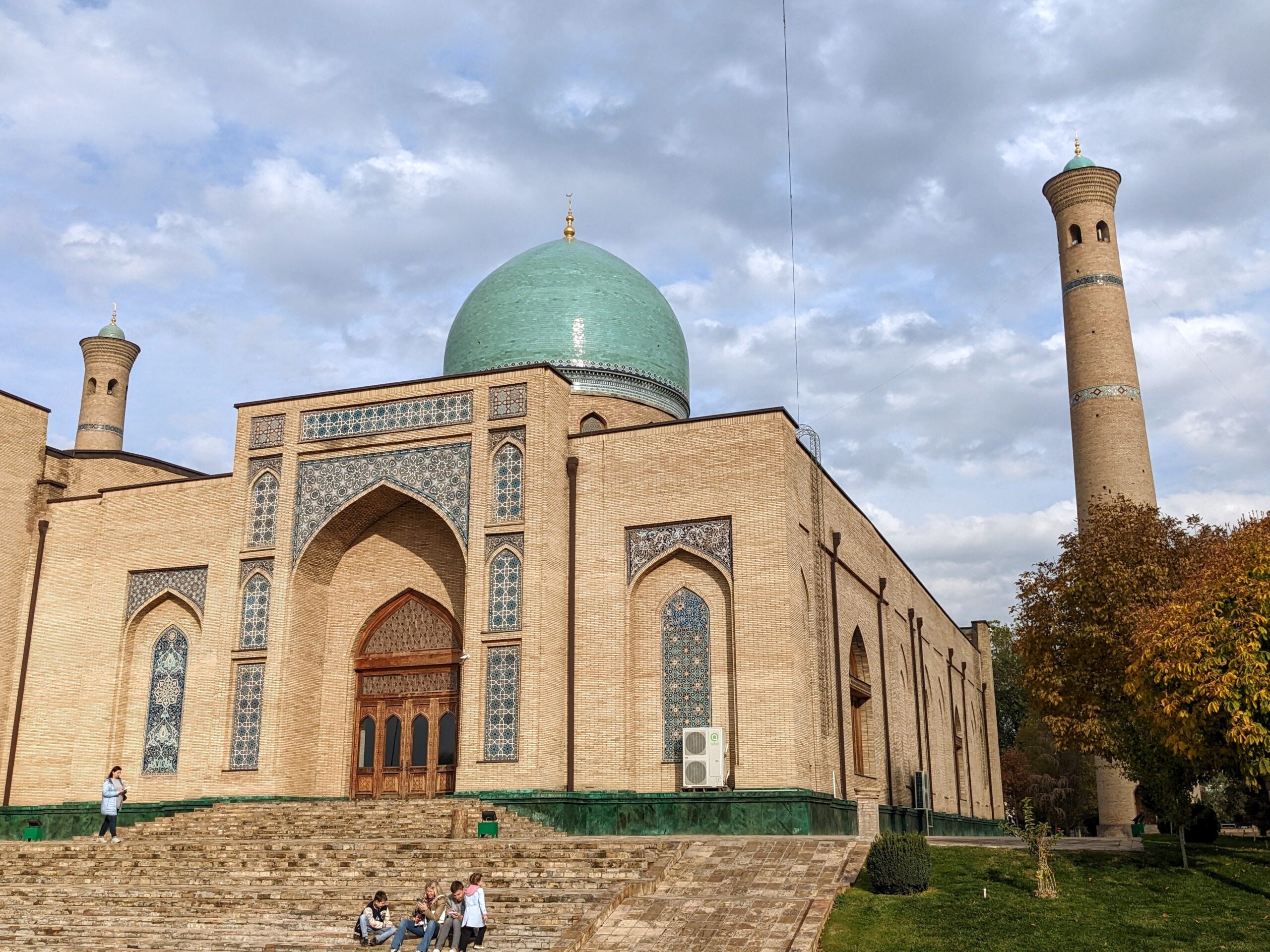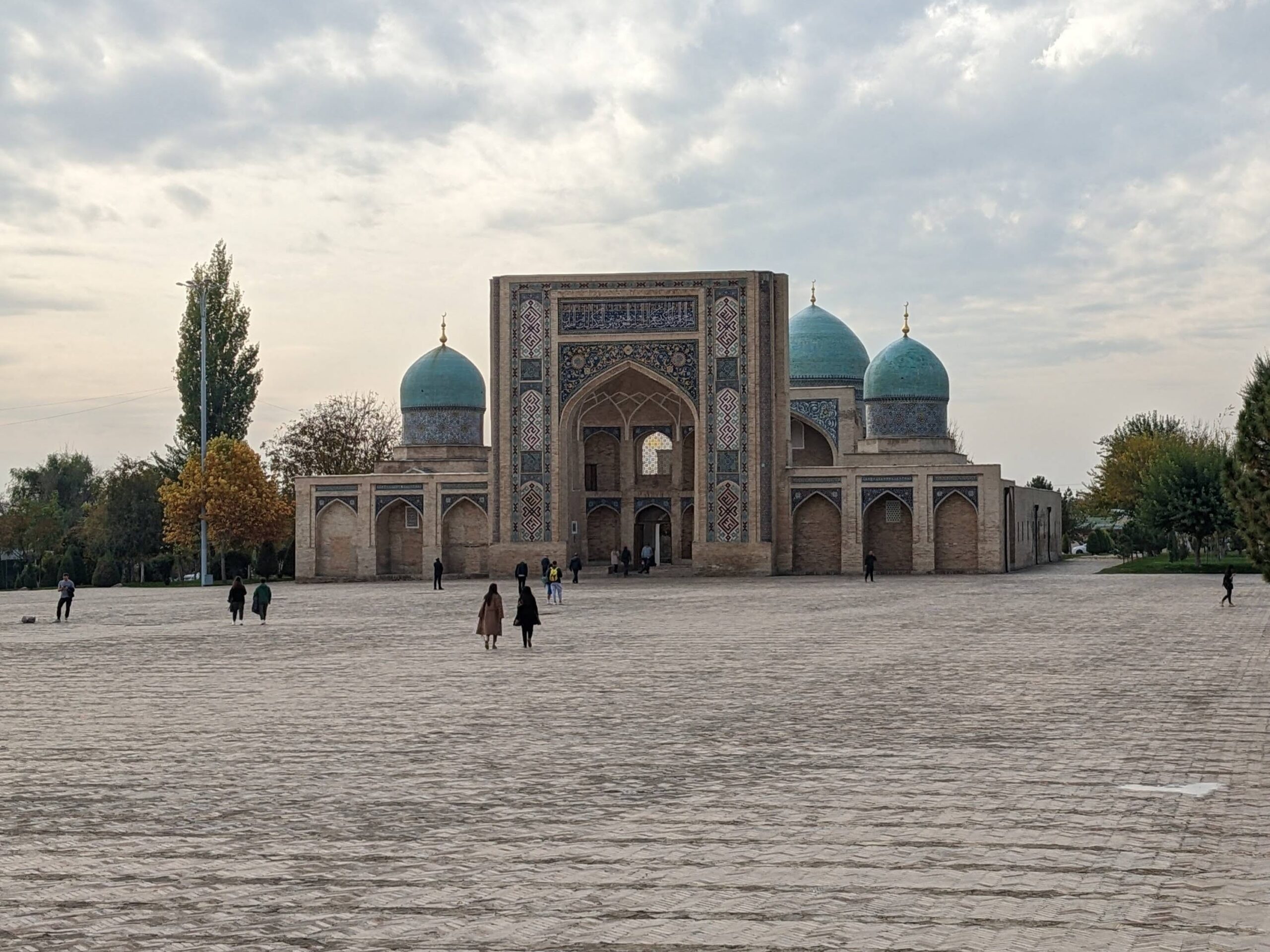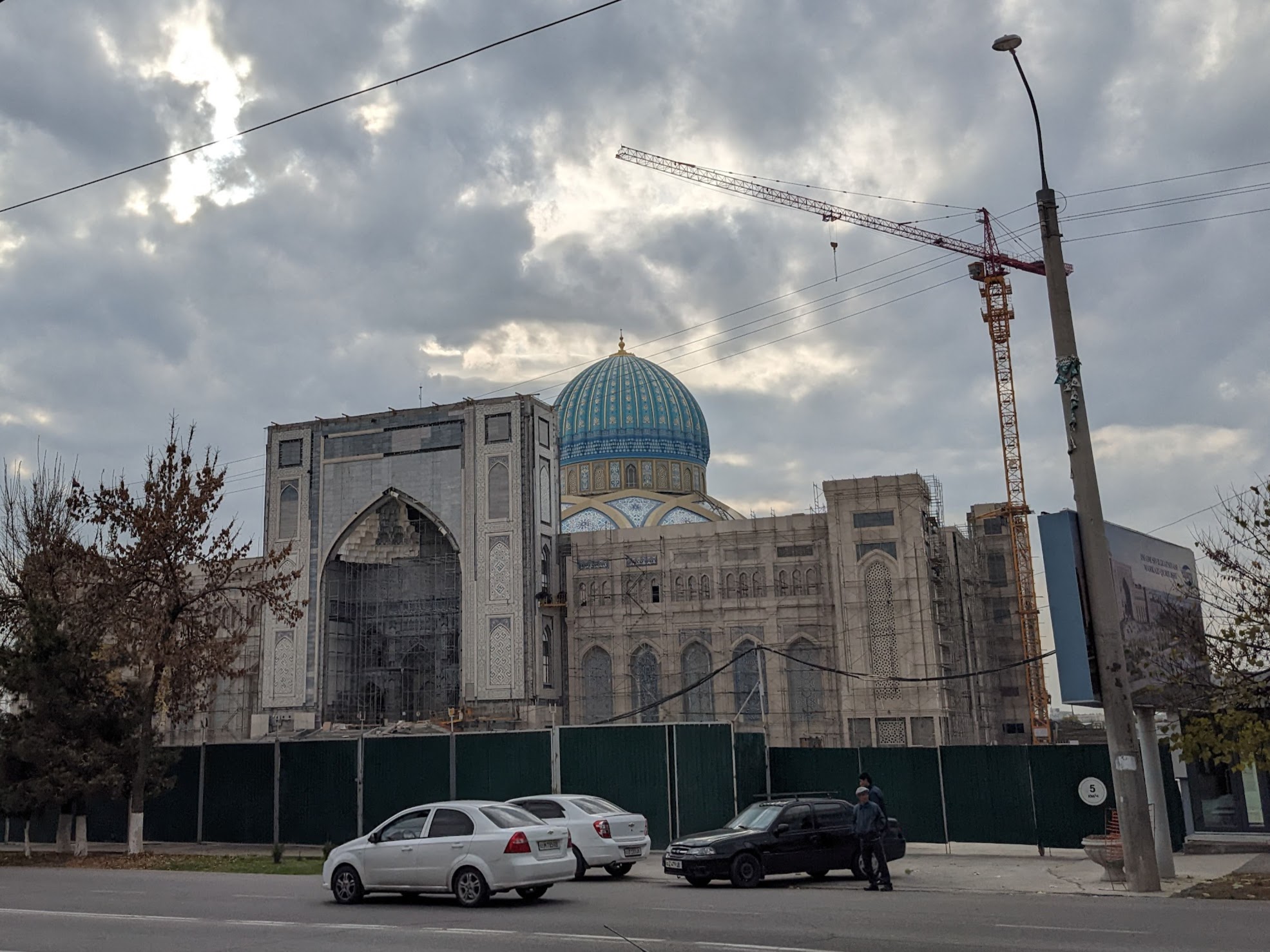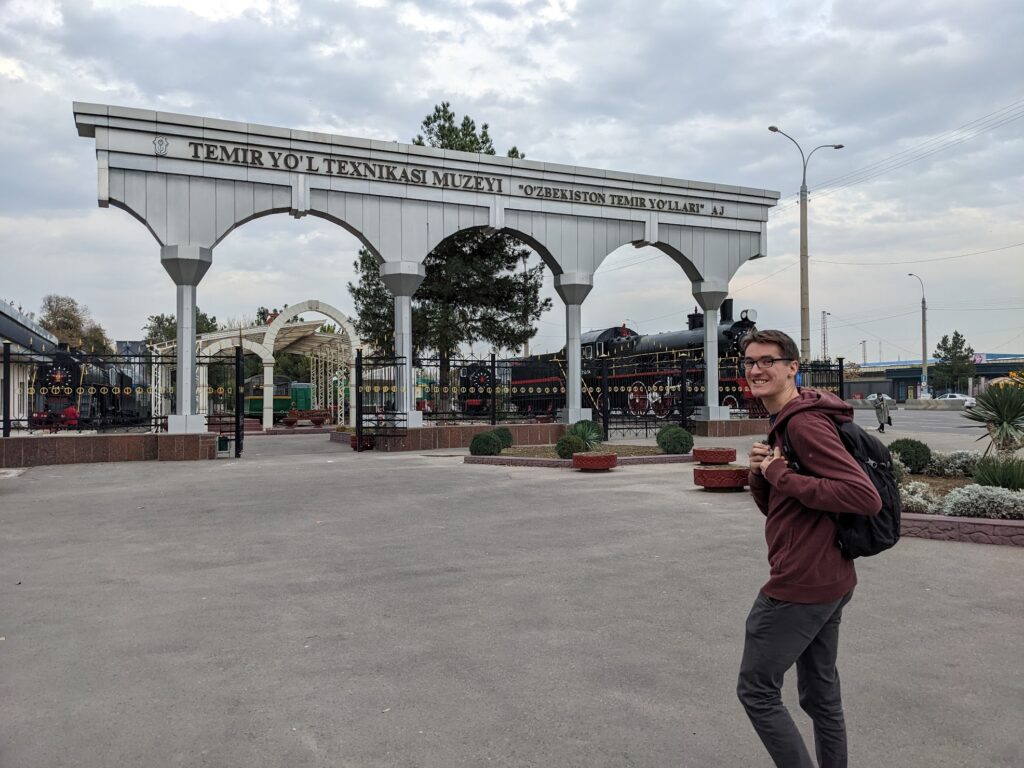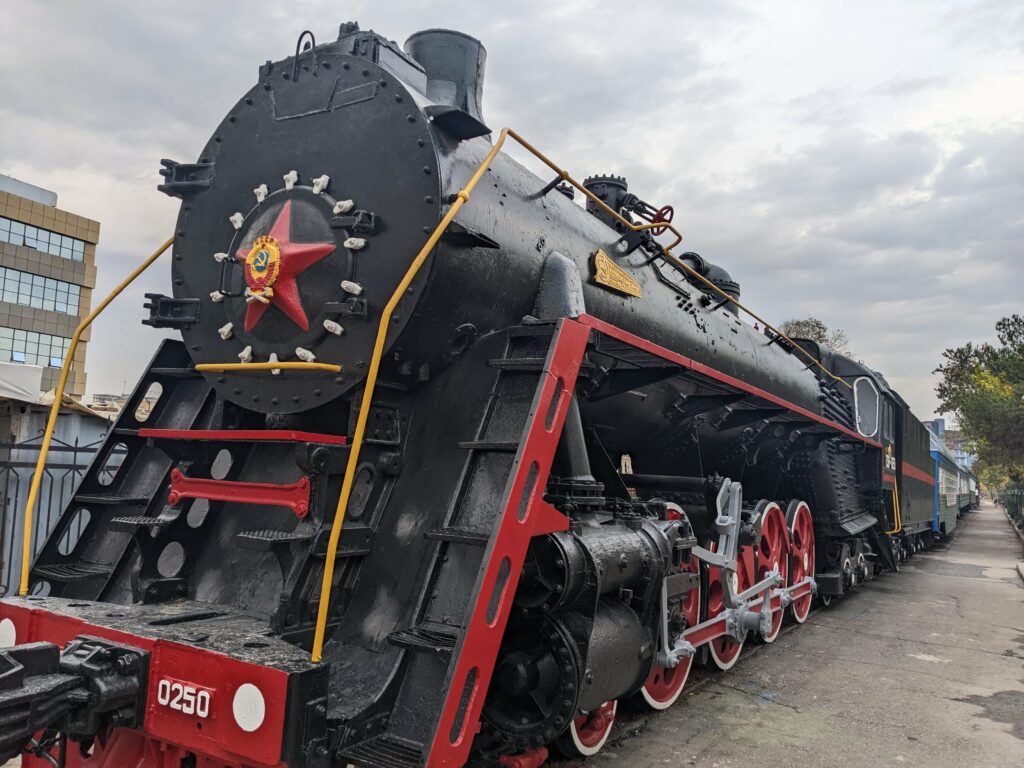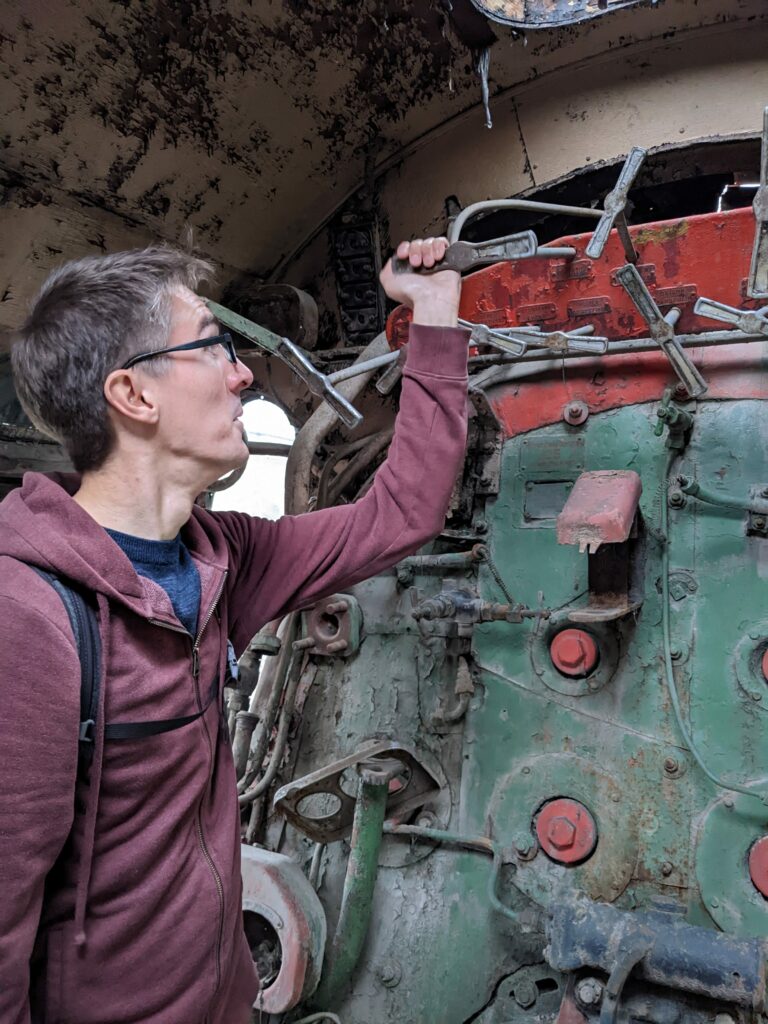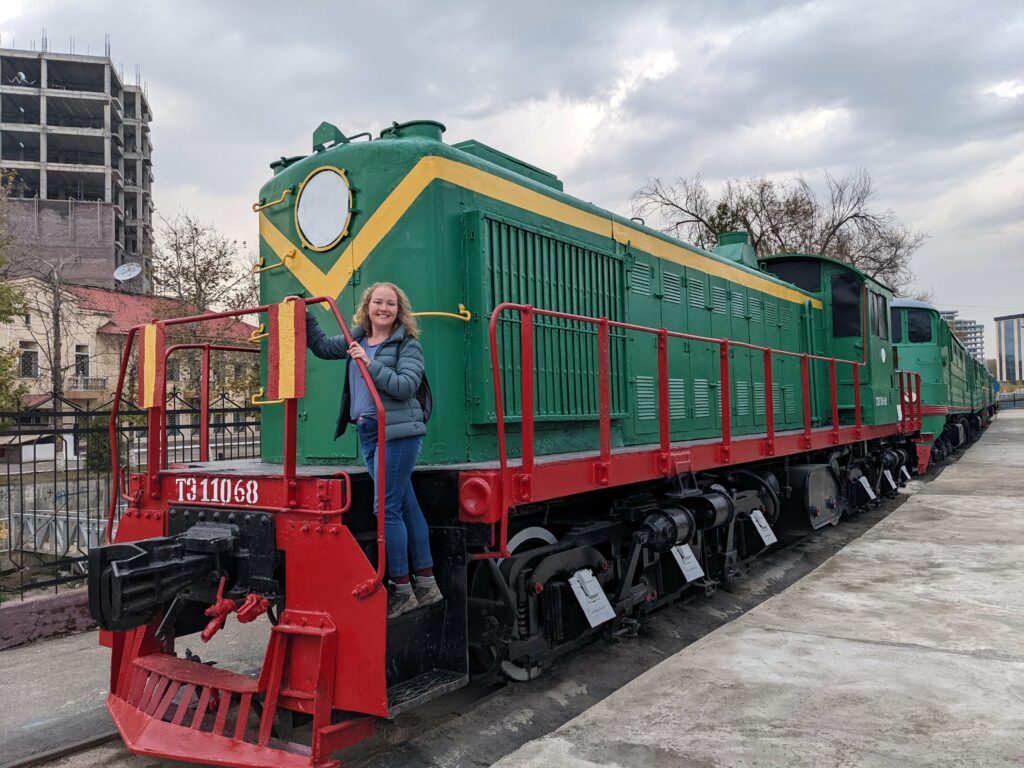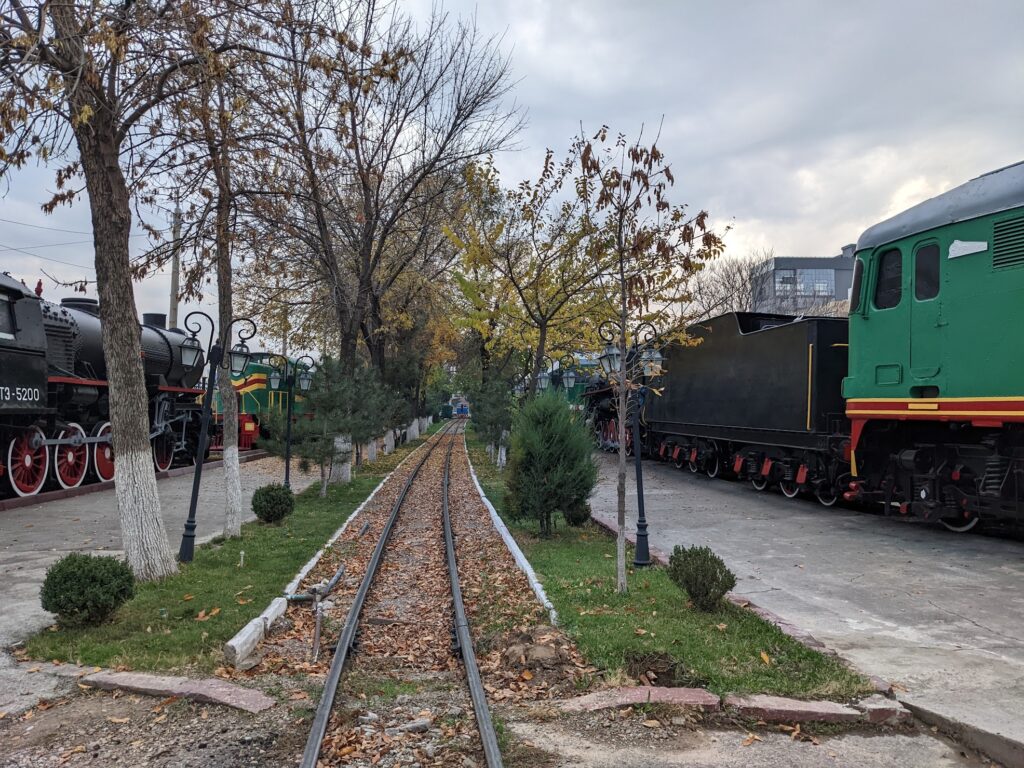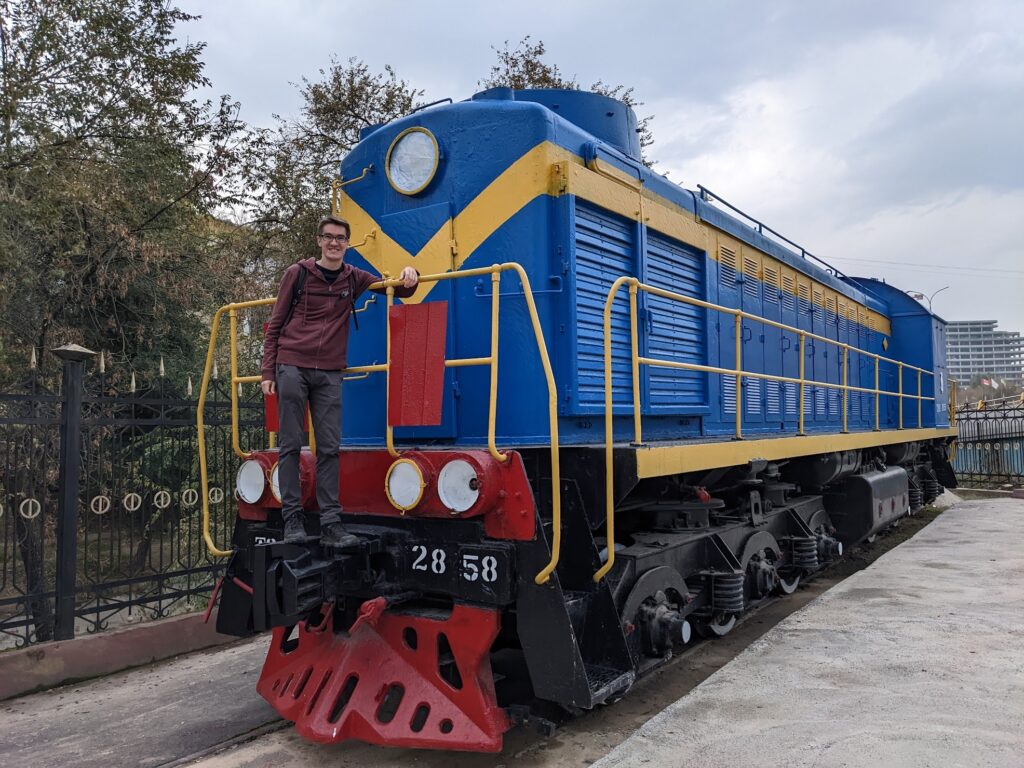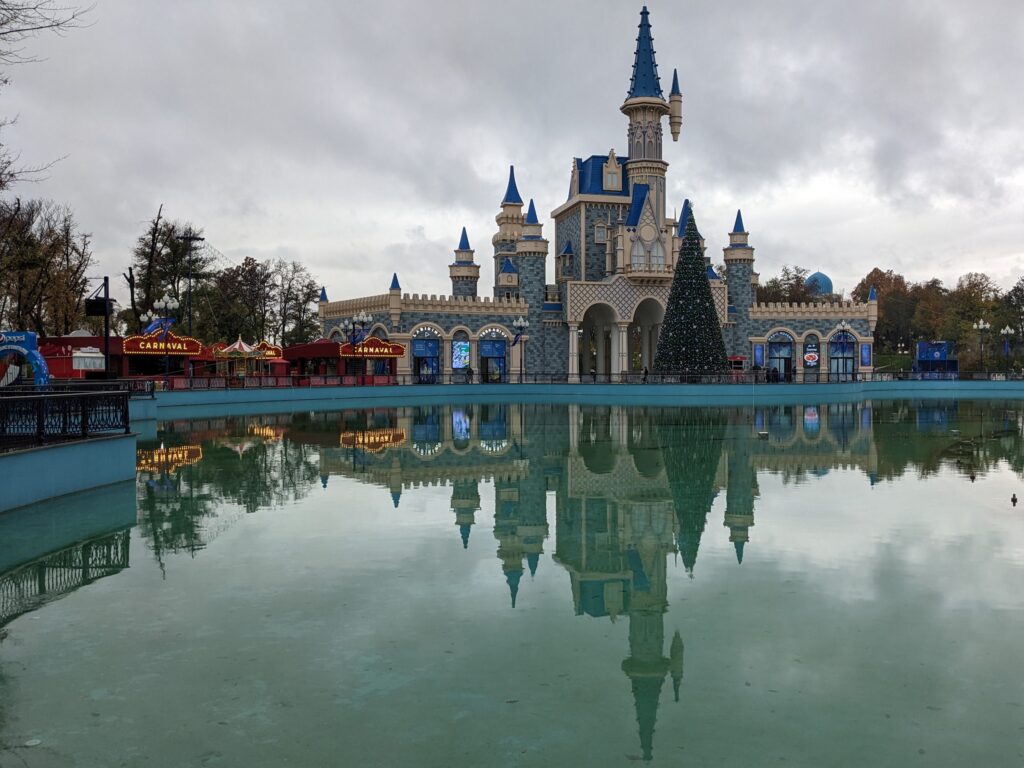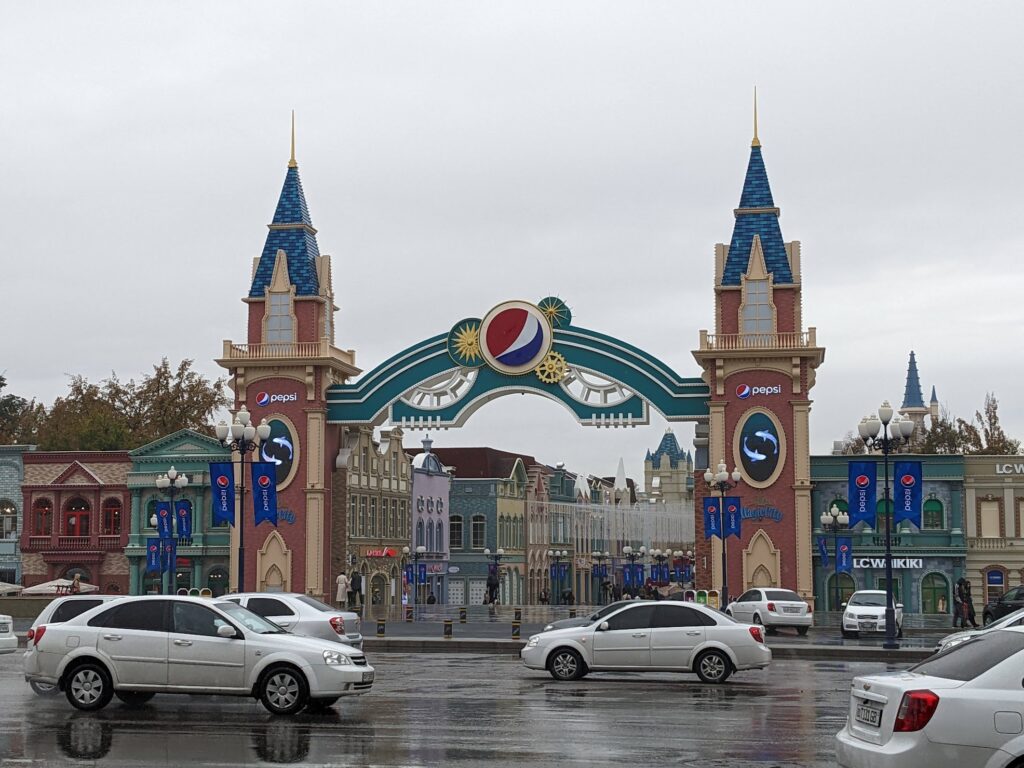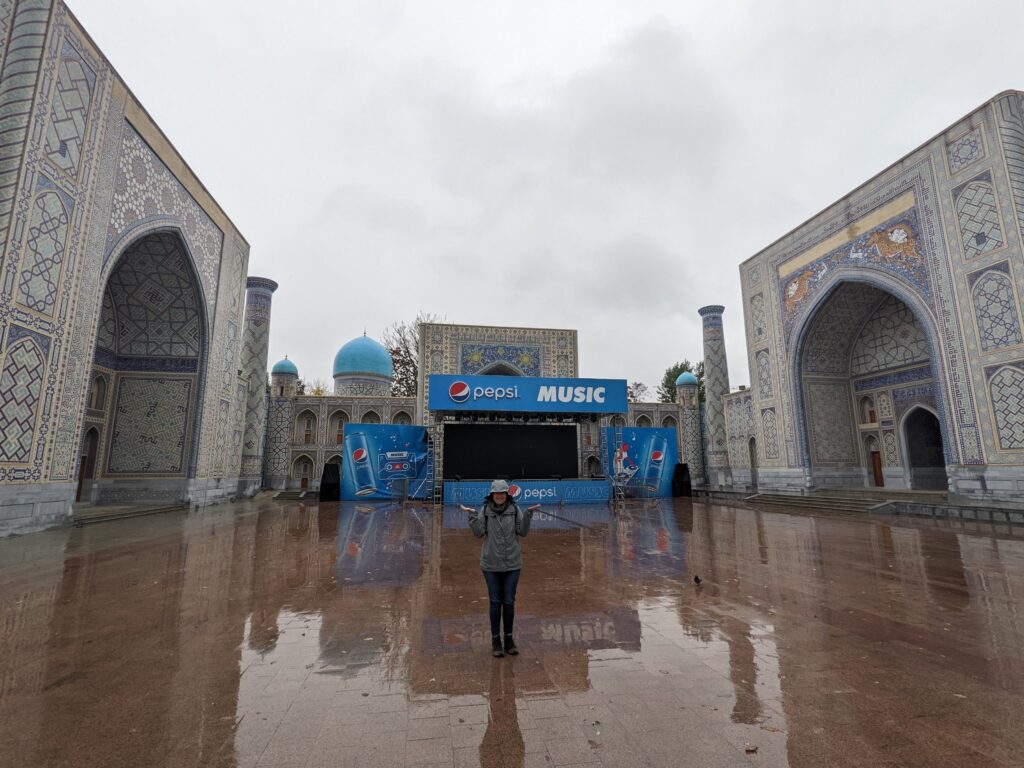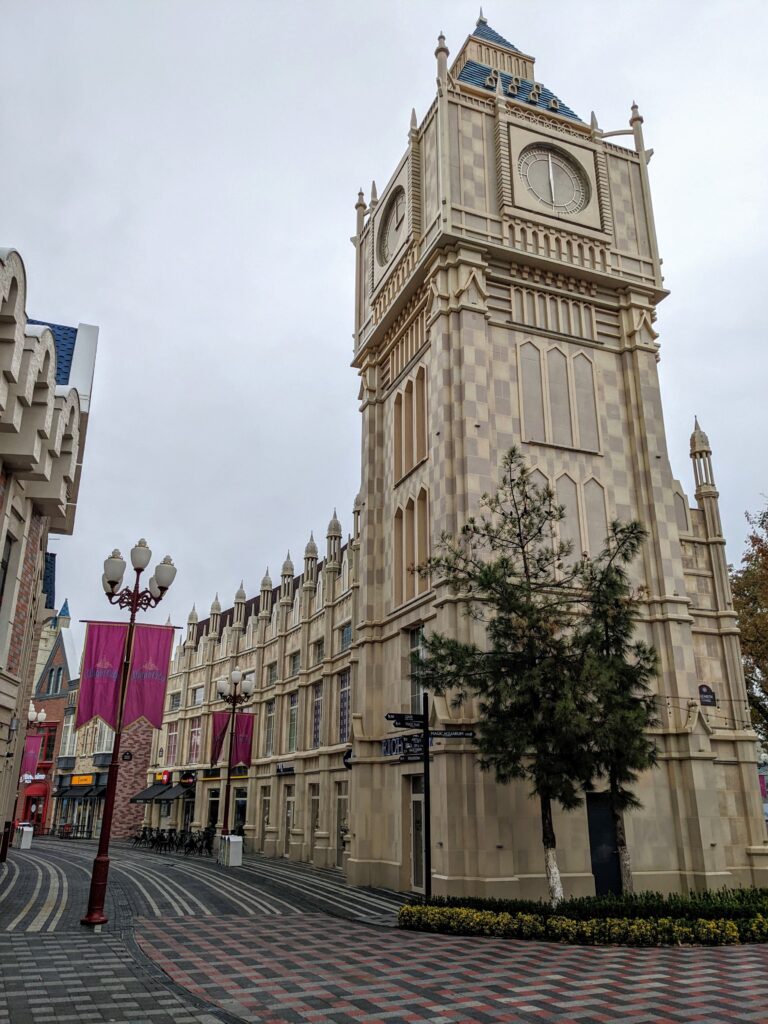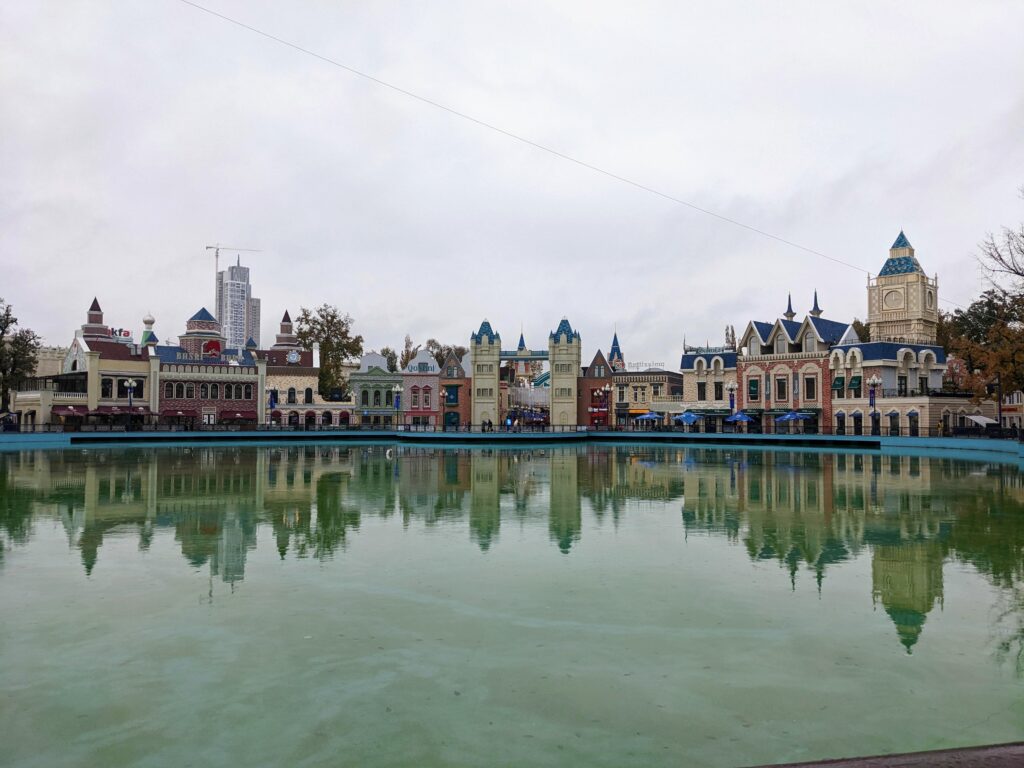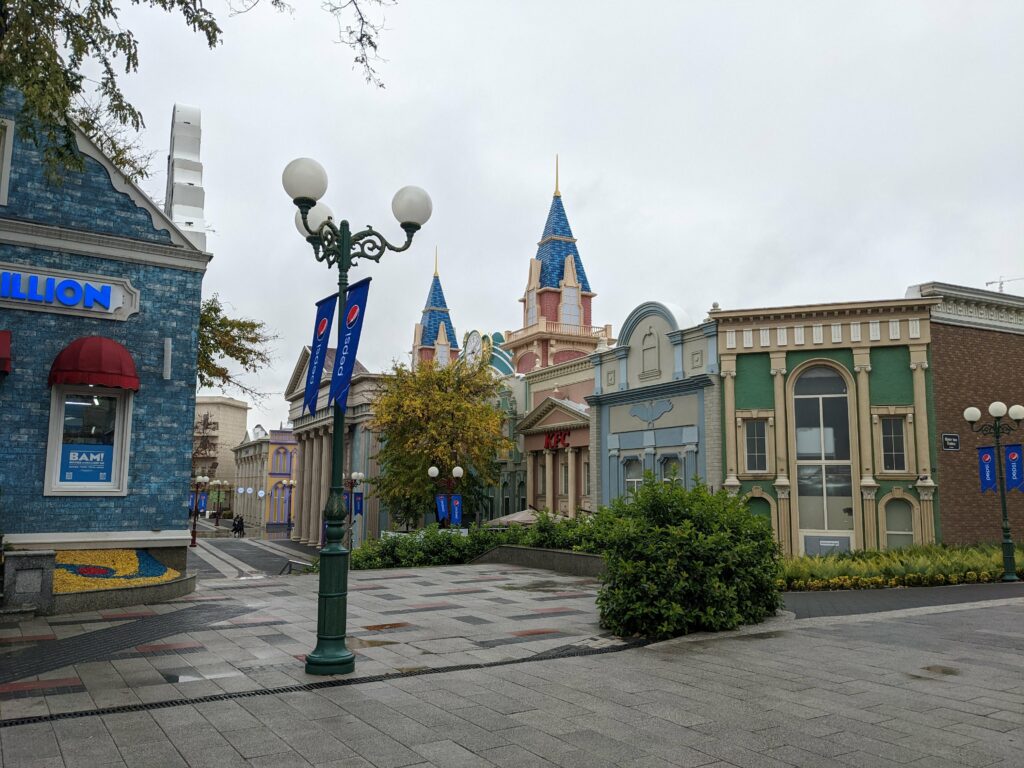Tashkent, the capital of Uzbekistan, is a large, modern city of imposing buildings and vast public squares. To our relief, the grid layout of roads were frequented by proper city buses that made it easy to get around by public transport. For once, we felt like we’d won Public Transport Roulette on the route between the train station and our hotel.
Tashkent’s closest thing to a city centre is Amir Timur Square, a circular park at the intersection of the ancient Silk Roads connecting Asia to Europe. Over the years, statues of various historical figures have occupied the plinth in the centre of the park, including Joseph Stalin and Karl Marx. Today, the park’s focal point is a 48m statue of Timur (Tamerlane), with the conqueror shown riding a horse with his hand raised and cloak blowing out behind him. As impressive as the statue is, the horse turned out to be missing an important body part, the whereabouts of which is apparently one of Tashkent’s great mysteries. When recounting this anecdote in a family group chat, we got the response: “People are the same wherever you go, aren’t they?” So true!
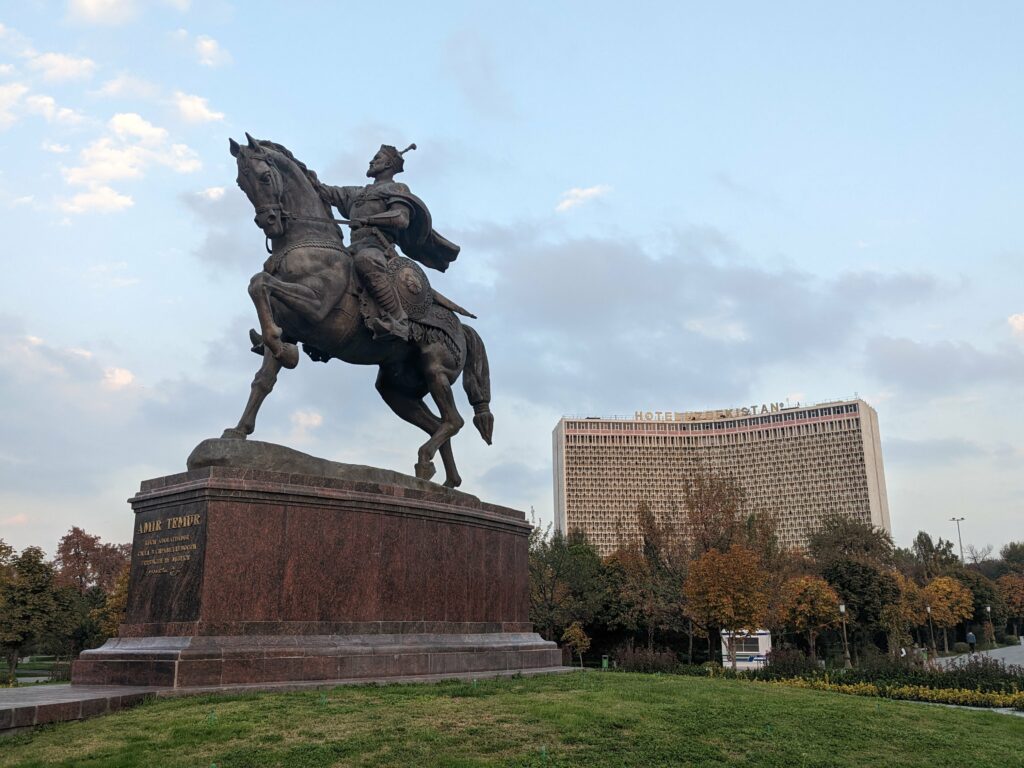
We spent some time exploring Tashkent’s monuments and memorials the evening after we arrived, starting at the Senate building (below left) and Independence Square (below right). The latter’s Independence Monument replaced a statue of Lenin following the fall of the Soviet Union.


Later, we came across the incredibly moving Crying Mother Monument, which depicts a seated woman facing an eternal flame (below left), flanked on either side by plaques containing the names of approximately 400,000 Uzbeks who lost their lives during the Second World War. To try to put this into perspective, I counted 240 names on a single plaque (below centre), then stepped back to take in the full magnitude of the row of 28 books, each containing 52 plaques (below right).



We also learnt about the earthquake of 1966, which destroyed most of the buildings in the city. Following the earthquake, men and women travelled to Tashkent from many surrounding Soviet republics to assist in the massive rebuilding effort. This provided an explanation for the modern Soviet appearance of this ancient “stone city” (a literal translation of Tashkent). These men and women are honoured in the statue below, standing atop a pile of rubble, and connected to a clock by a fissure recording the precise date and time of the earthquake.
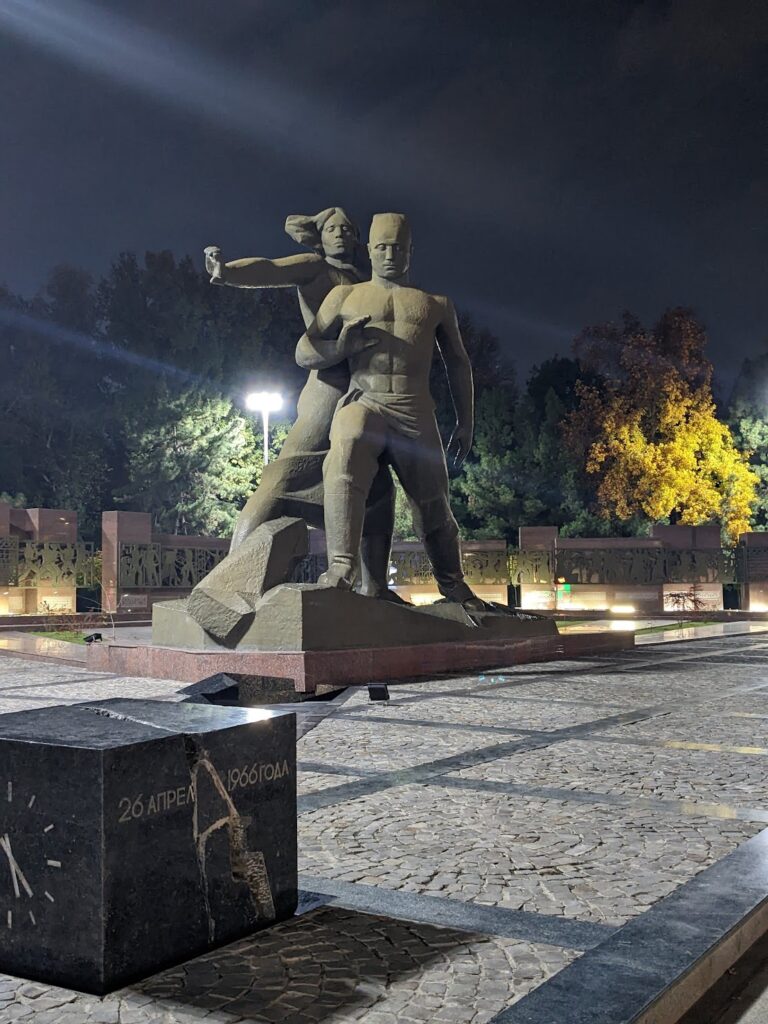
After this crash-course in Tashkent’s history, we were keen to experience some of the city’s present day life, and for this we headed to the Chorsu Bazaar. Now, Sara sees herself as a bit of a market connoisseur, and yet this was still the largest bazaar we’ve visited to date. With its colossal turquoise domes, it certainly gave Istanbul’s Grand Bazaar a run for its money in beauty, then blew it out of the water for authenticity.
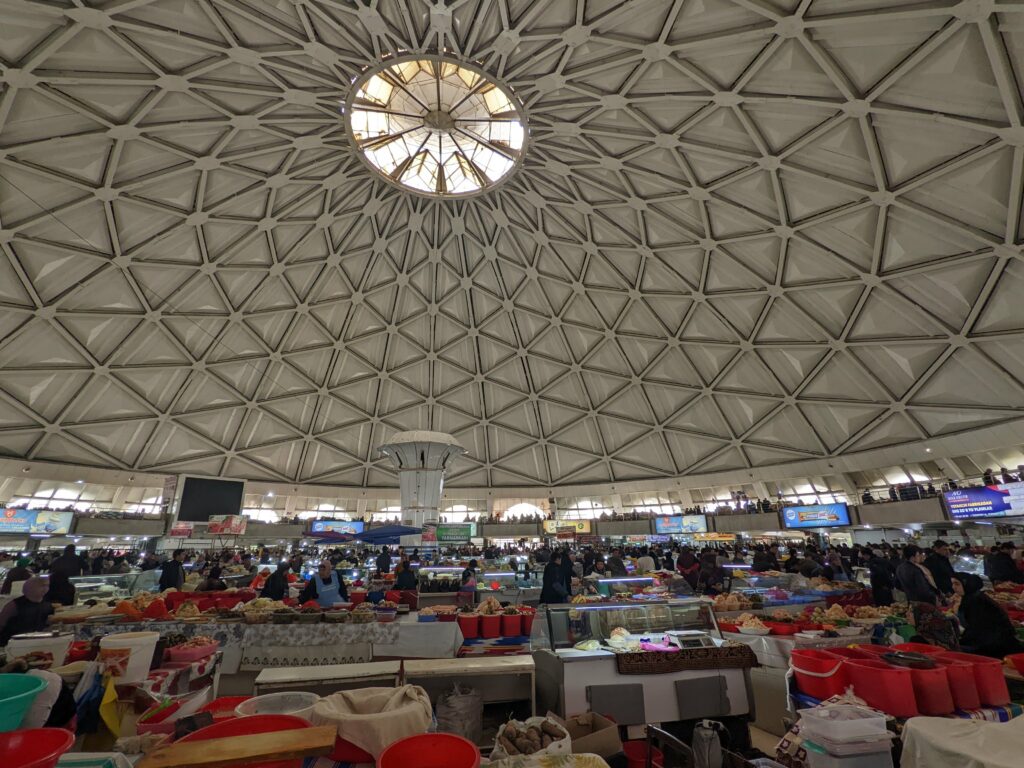
We found ourselves squeezing through alleys of clothing and shoes one minute, and dodging past trays of raw meat and huge piles of vegetables, cheeses, prepared salads, nuts and spices the next. If you wanted a medical uniform, a birthday cake, gardening supplies or a new sink or toilet, you could find these here too. Exploring the market was thirsty work, so we took advantage of one of the stalls selling fresh pomegranate juice. And to top it all off, we discovered a huge multi-restaurant conglomeration, where we happily sampled some shashlik through the thick barbecue smoke blowing across every table.
Old Tashkent was most visible at the Hazroti Imom complex, a collection of medressas, mosques and mausoleums surrounding yet another vast and largely empty square. The small Moyie Mubarek Library Museum, which holds what is said to be the world’s oldest Quran, lies stranded towards the centre of the square. Despite the considerable size of some of these buildings, they were still somehow overshadowed by the Centre for Islamic Civilisation, currently under construction. While hugely impressive (it must be one of the largest buildings I’ve ever seen by volume), we couldn’t help wondering what had to be cleared to make way for its massive footprint.
We were delighted to find that Tashkent’s metro not only provided an efficient and comfortable means of transport, but its stations were also an attraction in themselves, with each station boasting a unique theme. We entered the Metro at Chorsu, but hopped off at Kosmonavtlar station to marvel at the astronaut-themed decoration, before jumping back on the next train seven minutes later. We’d read that photography in the metro stations had been strictly forbidden since the 1999 terrorist attack, although we’ve since learnt that these rules have been relaxed in recent years. Still, this BBC Article covers the artwork way better than we ever could.
The metro ride however was merely a warm up for what was to follow – a visit to Tashkent’s open-air railway museum. While information on the exhibits was light, the experience itself was very much hands-on. We happily clambered onto, into and around many of the locomotives, with their splendid exterior paint-jobs contrasting heavily with their rusted and rotten interiors. I’ve since read that the museum contains steam locomotives from the Russian Empire, the USA, and even Nazi Germany!
At this point, the rain set in and didn’t stop for a couple of days. We eventually ventured out with two goals: to explore the Soviet architecture of Navoi Park and to complete a bit of clothes shopping to prepare us for the fast-approaching winter. However, when we hopped off the bus, we were confronted instead by a rather unexpected slice of Disneyland. It featured little recreations of London’s Houses of Parliament and Samarkand’s Registan, which was a nice summary of our journey to date. In the end, this slightly surreal corner of the park overshadowed the architecture and statues we’d come to see in the first place, while also providing a handful of much-needed clothing shops.
With our time in Uzbekistan almost over, we managed to squeeze in one last trip to Margilan, the source of the silk that gives its name to the ancient trade route we’d followed since leaving central Europe.
